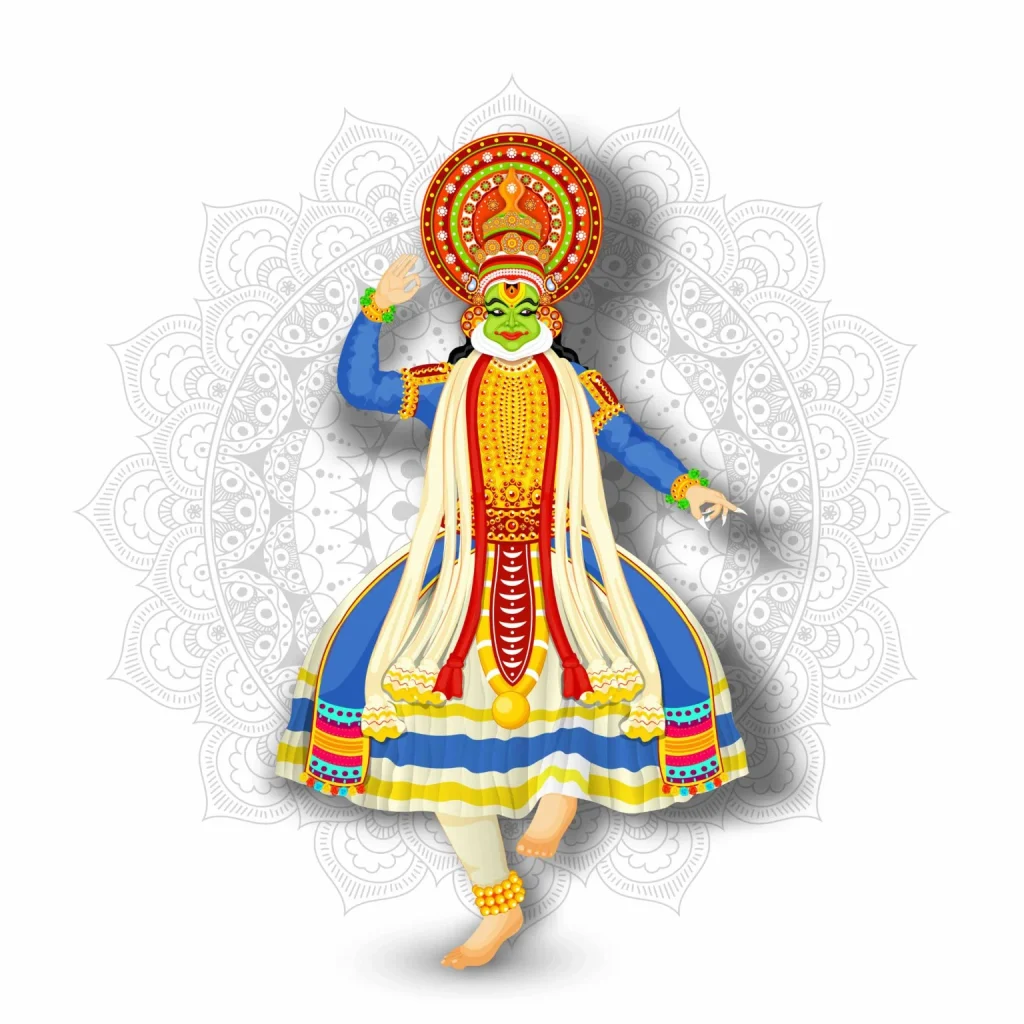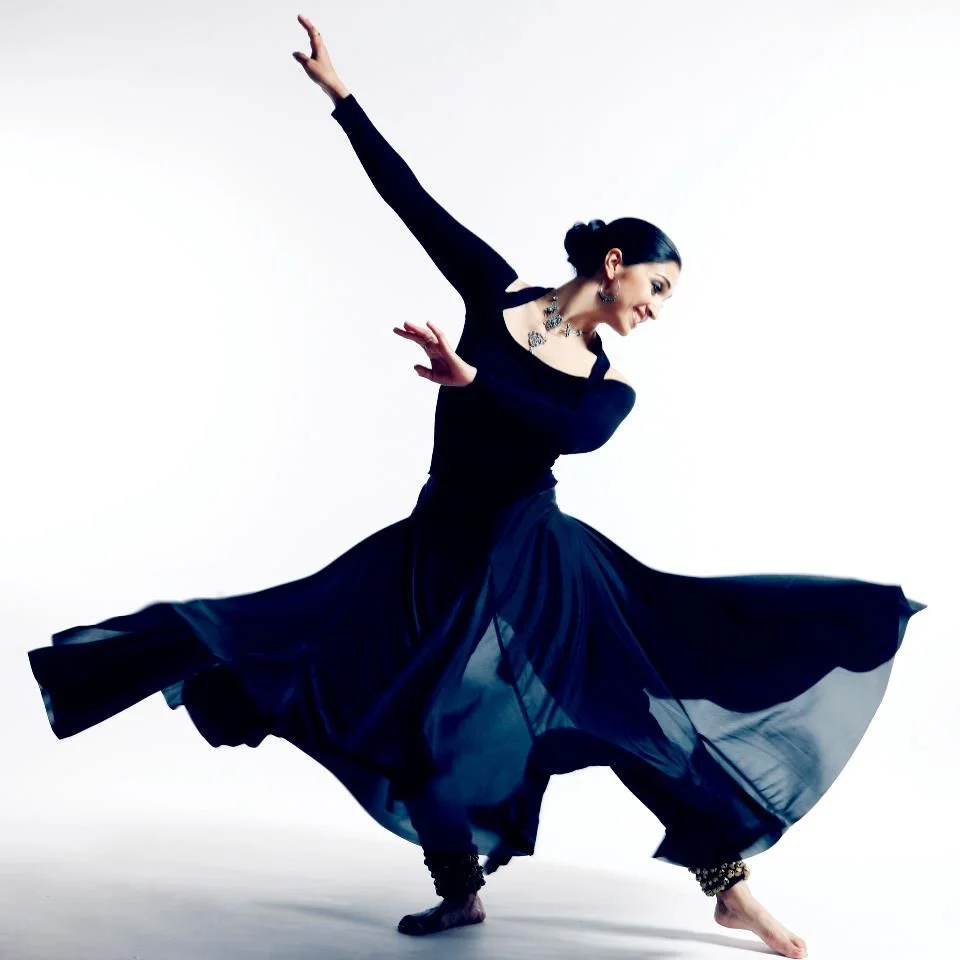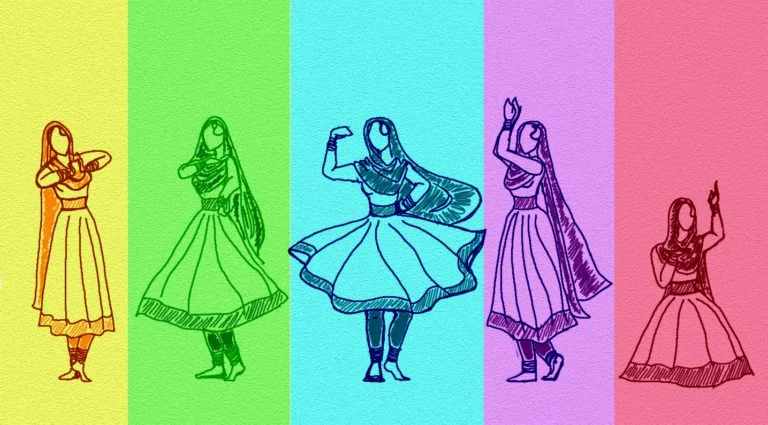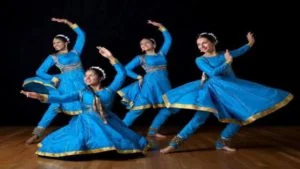Kathak is one of India’s eight primary classical dance styles. Kathak is said to have originated with itinerant bards known as Kathakars or storytellers in ancient northern India. As the purpose of this dance form is to tell the audience a story, hand mudras (hasta mudra) are the most significant aspect of Kathak dance. Kathak mudras facilitate storytelling and along with facial expressions, they make the tale easier to understand. Today we will learn about many kathak dancing mudras and their meanings.
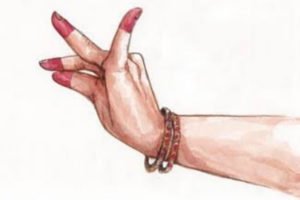
What are Mudras?
Since the Vedic period, mudra has been an important component of Indian tradition and culture. The mudra is a technique for using the body to explain and execute things in a way that everybody in the audience can understand. The word gesture has numerous definitions in the dictionary, but it has a unique meaning in the context of classical dance. “Seal” or “mark” is what Mudra means in Sanskrit. Mudras are a type of hand gesture that is often in use in meditation, devotional practises, and yoga.
The Natyashastra, as well as Buddhist and Hindu religious rituals, are the origins of this method. It is believed that doing mudras strengthens the connection. Moreover, they enable one to connect with various aspects of their physical and spiritual well-being.
Many of the mudras have numerous meanings that change depending on the story’s setting. They’re made in such a way which makes it easy for the audience to decode them. Kathak and many other Indian classical dances rely heavily on hand mudras. When the artist uses proper mudras to communicate and explain to the audience, it makes the whole thing easier to understand.
13 Basic Kathak Mudras for Beginners
Mudra is based on the Natyashastra’s list of 24 mudras and the Abhinaya Darpana‘s list of 28 mudras. The latter eloquently describes how Kathak dancers express themselves. Various types of dance forms with their own scriptures have expanded on this theme using Bharatmuni‘s expertise as a foundation. In all of these writings, hand gestures are regarded as important as the alphabet in the dance language.
When you sing a song, you utilise hand gestures to represent the meaning of the song, your eyes to stir in the mix of emotions, and your feet to keep track of the time. In just about any case, these make it easier to communicate stories and have been an essential part of Indian theatre and dance performances since time immemorial.
Mudras have two main categories:
- “Asamyukta Mudras,” which are mudras that uses only one hand,
- Samyukta Mudras,” which are mudras that uses both hands.
Therefore, Podium has put together a list of basic Kathak Mudras for learners to begin with.
Pataka
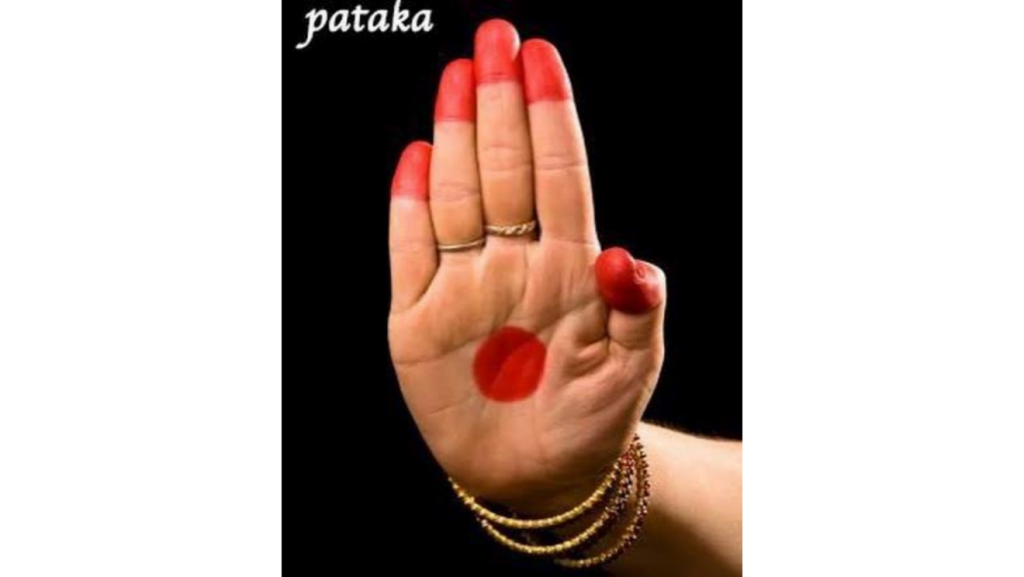
- All fingers should be straight and together, and bend the thumb in such a way that it reaches the end of the index finger.
- All of the nritta hastas use the Pataka, which is one of the most common mudras in Kathak.
- Dancers can use it to signify a blessing, the air, sky, or water, to invite another by waving the hand, to represent a dish, to mark a stop, to slap, shower of flowers, to show holding up a hill or uprooting it etc.
Tripataka
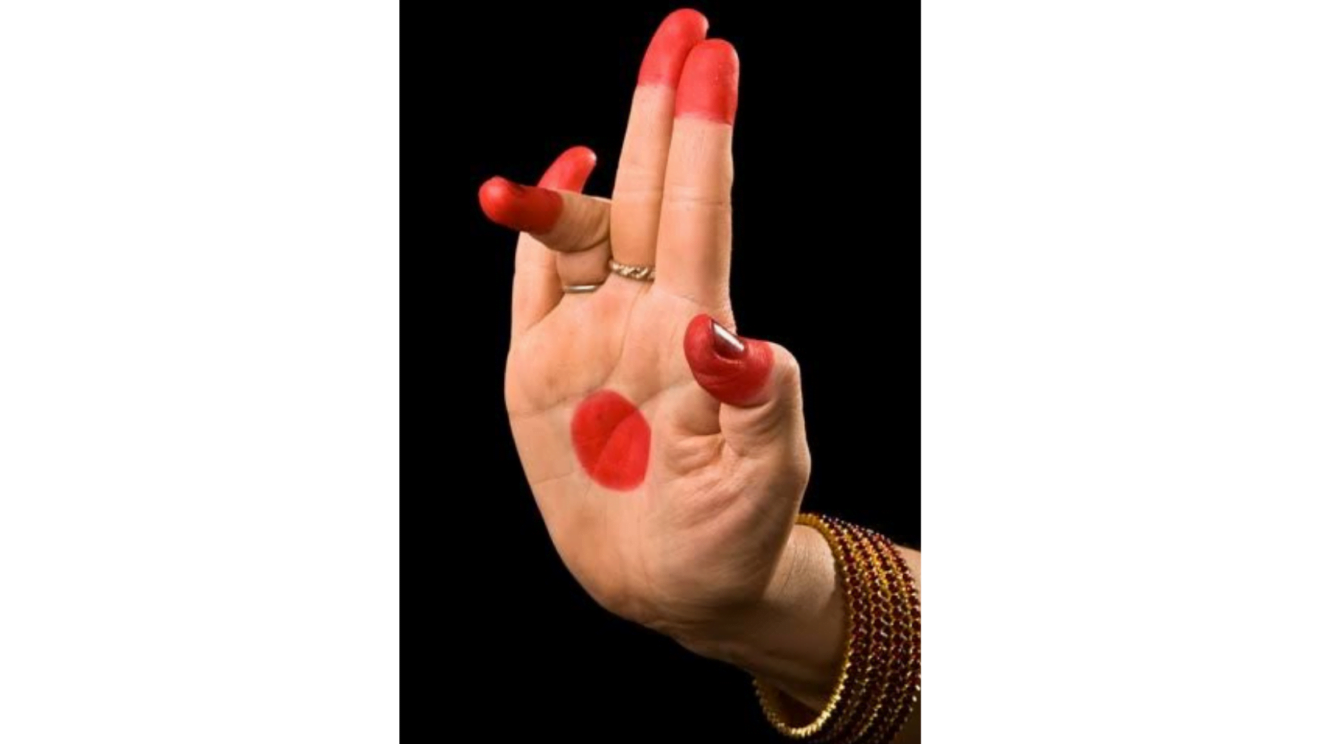
- Starting with pataka, bend the ring finger. The rest of your fingers should be firm and upright as well.
- Dancers can use it to draw a line, show a bindi or tilak, or represent the monarch and almost everything royal (like the crown).
Ardhpataka
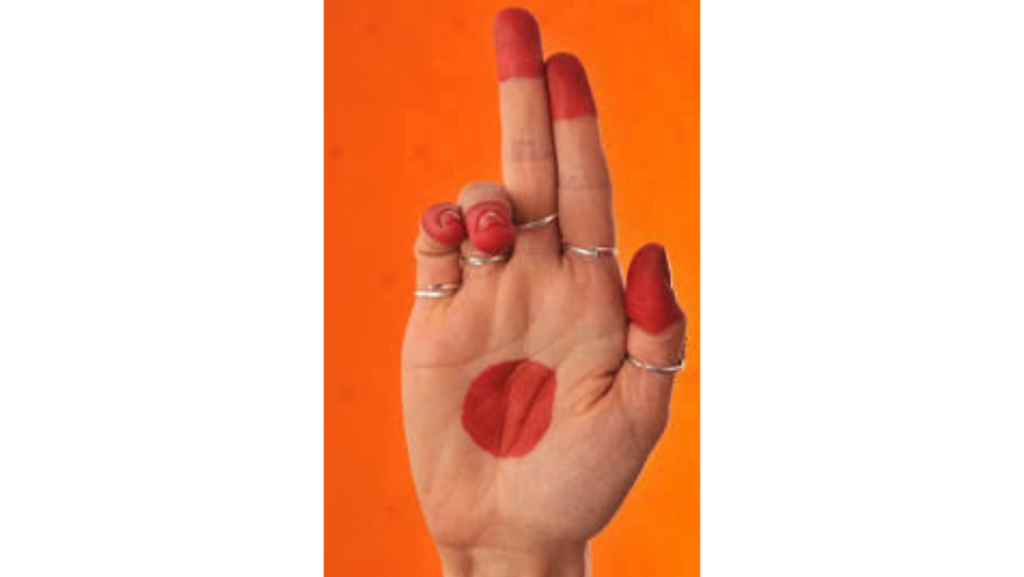
- After performing the Tripataaka, bend the little finger.
- Dancers can use it to denote leaves, a knife, bank of the river, an animal horn.
Kartarimukha
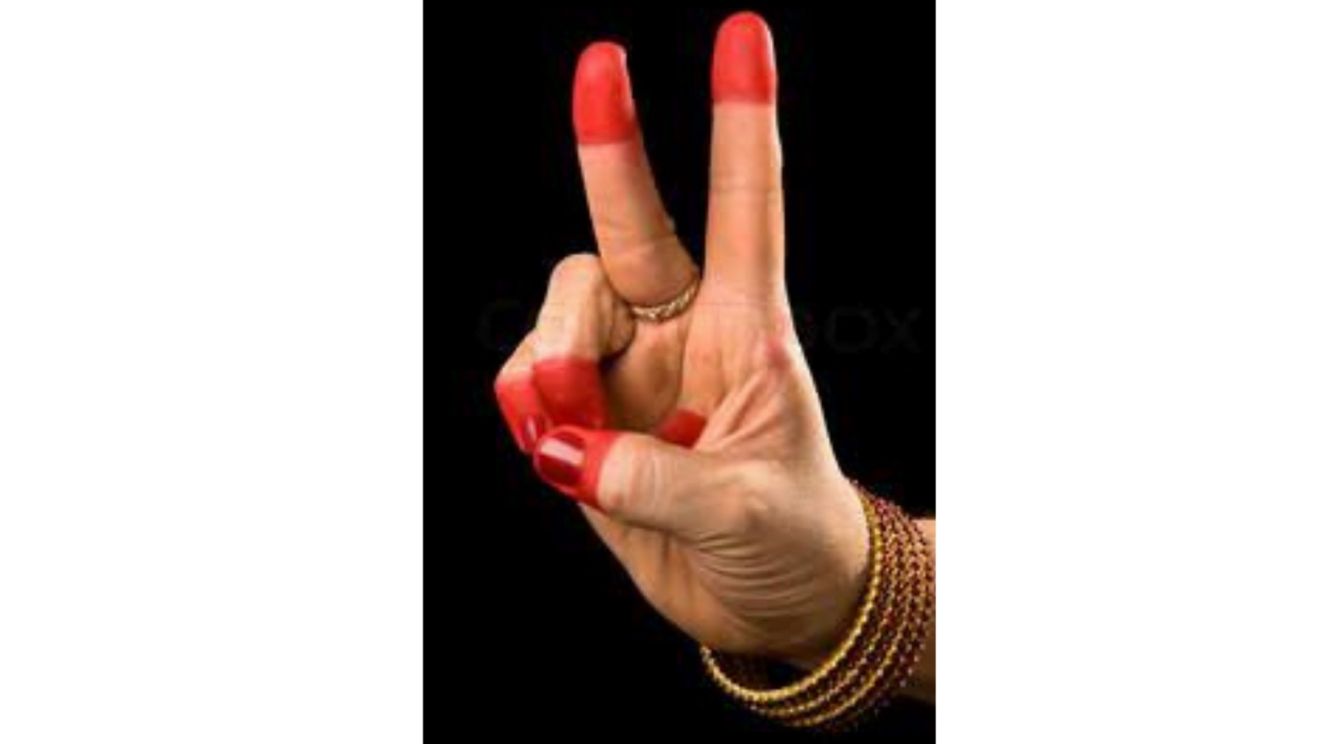
- Bend the little and ring fingers and press them against the thumb while stretching the index and middle fingers to resemble a scissor.
- Dancers cn use it to represent corners of the eye, separation of a couple, opposition, to show two different things, lightning, creepers etc.
Ardhachandra
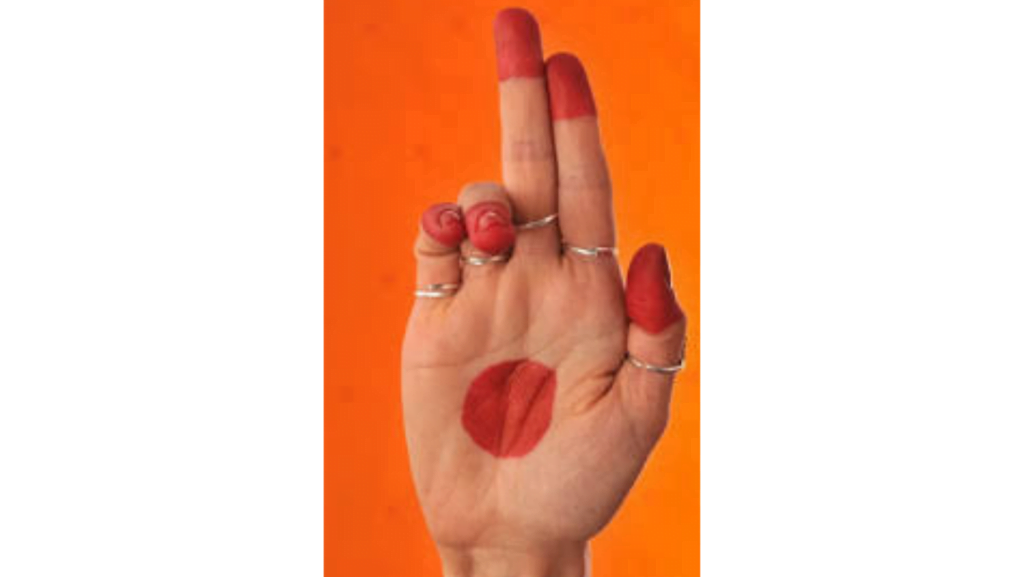
- Hold the thumb finger apart and all of the other fingers are straight and together. It’s similar to the Pataka gesture, except for the thumb finger.
- Dancers can use it to show crescent moon, ornament etc.
Mushti
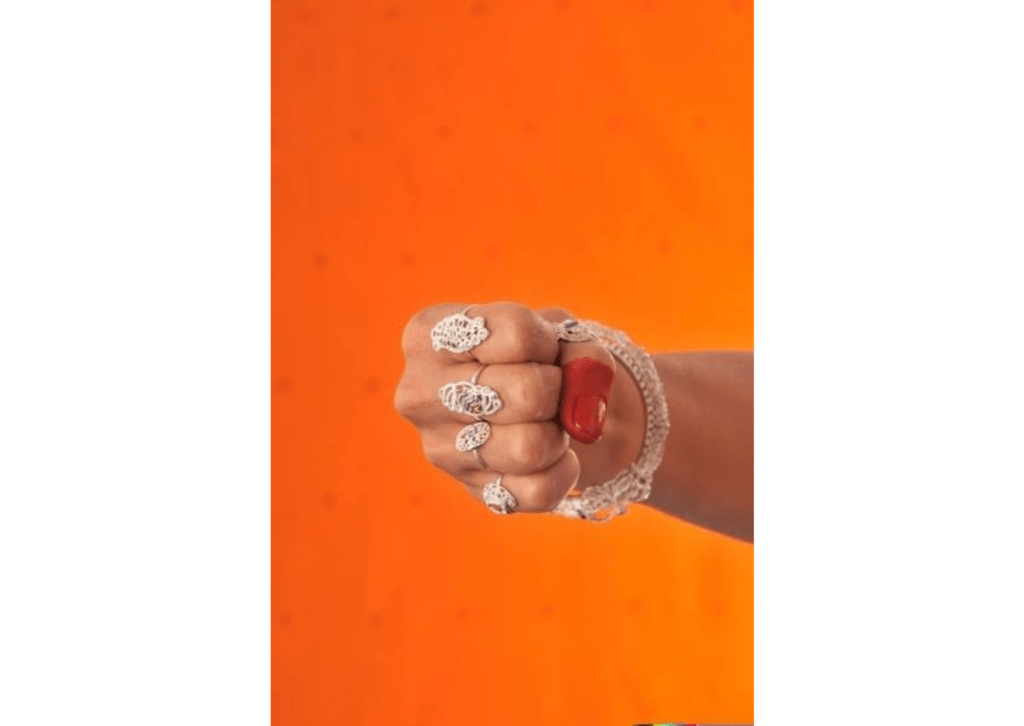
- First of all, clench the fingers and then wrap the thumb around them to form a fist.
- It represents beating, milking of cows and grasping weapons.
Shikhara
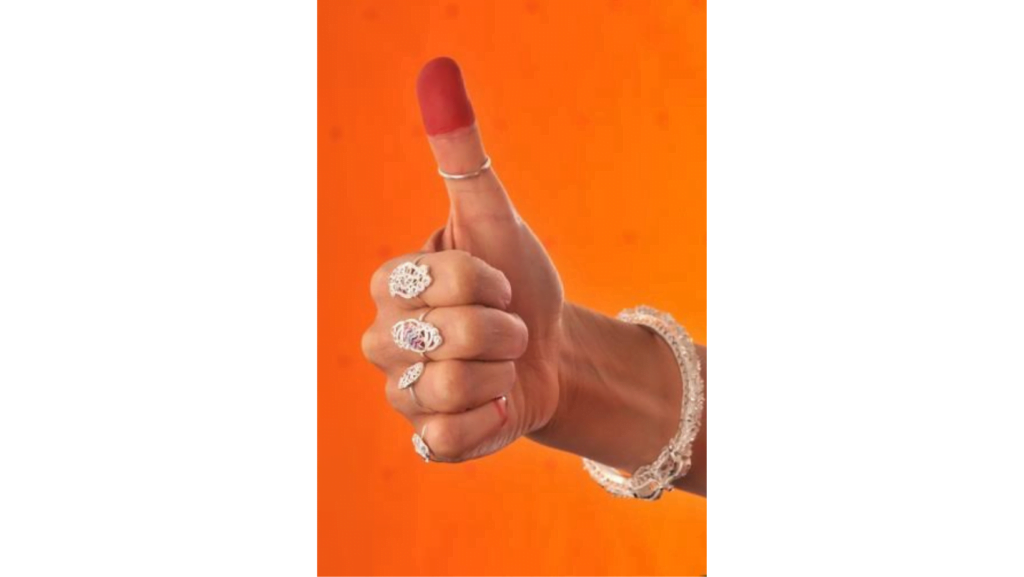
- Firstly, bend all the fingers except the thumb and press it against the palm. Then raise the thumb and hold it erect.
- It usually depicts a bow, delineation of lips, to tie around the waist etc.
Kapittha
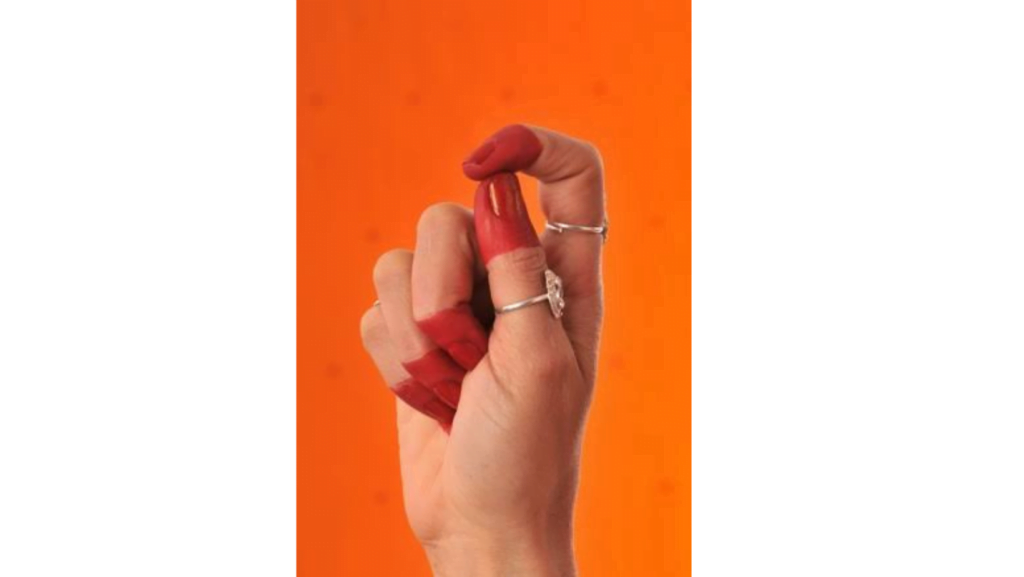
- While performing Shikhara, bend your pointer finger and place it over your thumb.
- Natyashashtra viniyogas such as depicting weapons, thunderbolts, and so on are not employed in Kathak, the Kapittha is used to depict a bird.
Katakamukha

- Firstly, bring the index, middle, and thumb together and then elevate the ring finger and little finger at a particular angle as shown above.
- It denotes drawing reins, holding a mirror, arranging a pearl necklace, wearing a garland, plucking flowers, wielding a long whip or holding a stick, churning etc.
Suchimukha
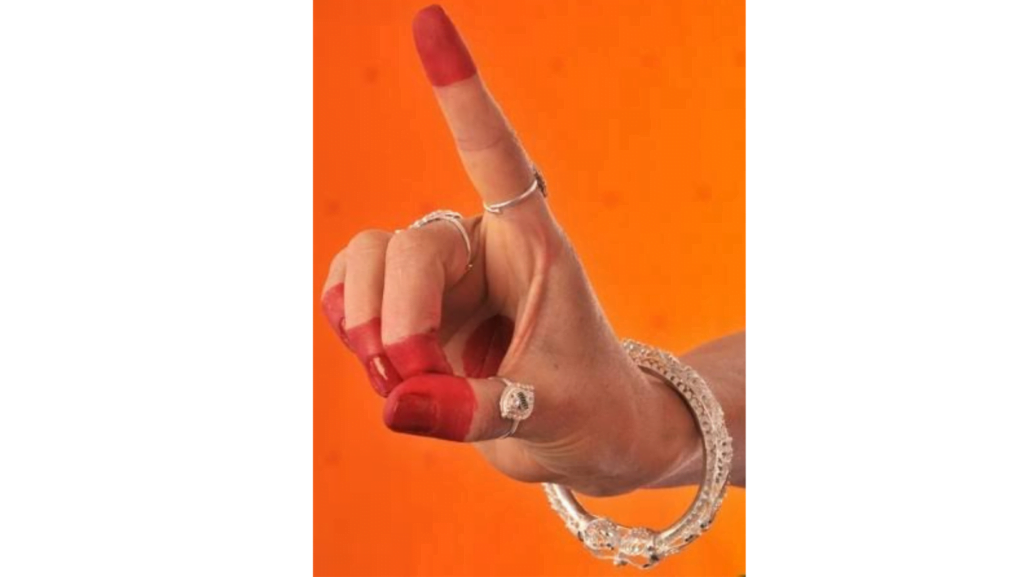
- While pressing the middle finger, ring finger and little finger against the thumb, keep the forefinger straight.
- This helps the artist to show lightning, earrings, anger, perspiration, hair, armlet decoration, the number one, to make a circular movement with the forefinger to signify taking away etc.
Padmakosha
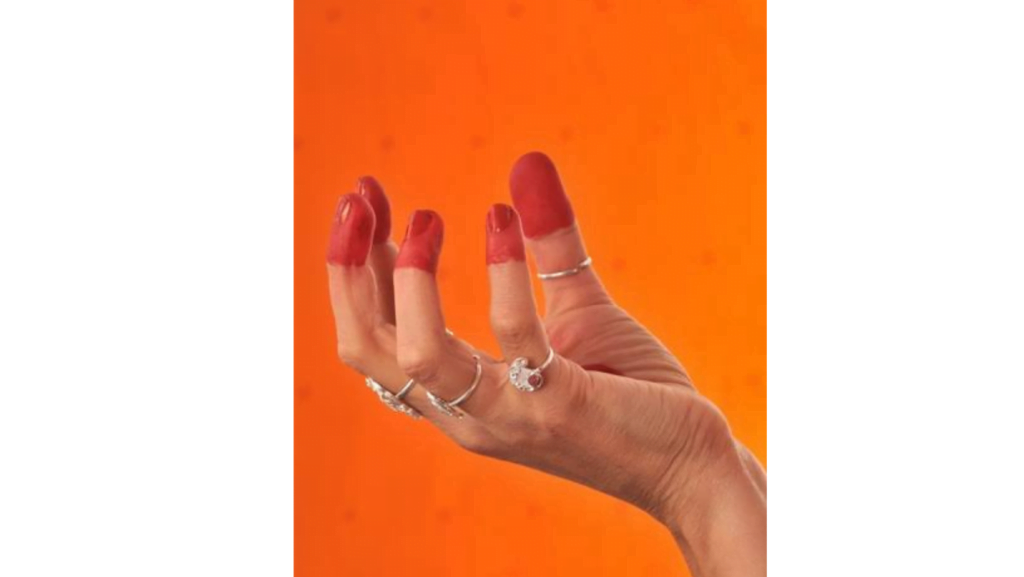
- Stretch all the fingers and slightly bring them closer to each other as if you’re holding a cup or a glass.
- An artist uses this mudra to represent bilva and other fruits, flowers/buds, offering puja to a deity, a blossom of Lotus or Lily etc.
Sarpashirah
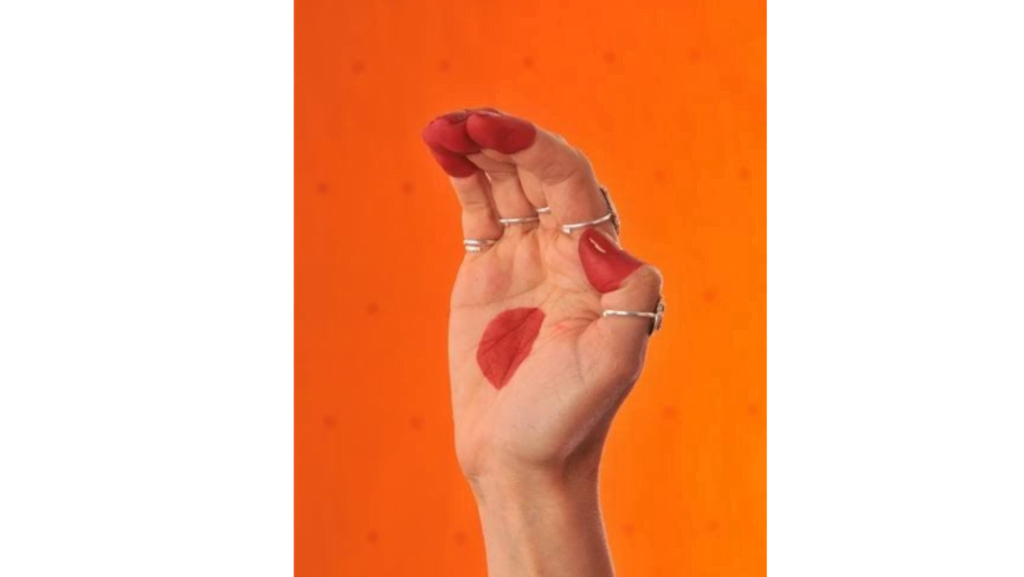
- Raise your hand, interwine your fingers with palm facing the front. Slightly bend your fingers rounding them in similar to the head of a snake.
- It usually represents movement of serpents, motion of the elephant’s frontal globes or offerings of water.
- It can be shown using both hands also.
Mrigasheersha
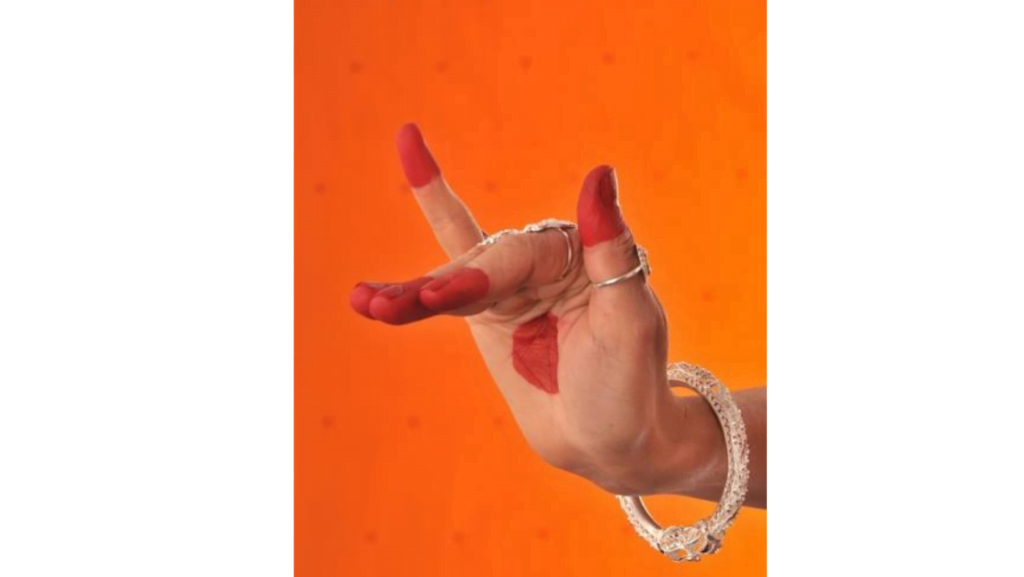
- Stretch the little finger and thumb upwards while bending all three fingers in the middle halfway towards the palm. Keep these three fingers firm and uptight.
- Mrigasheersha is sometimes employed to depict a deer or a flute in Kathak.
Final Thoughts
When one examines the history of Kathak, it becomes clear that the focus was on eliciting emotions from people’s daily lives and connecting them to storytelling.
Today’s Kathak encompasses a wide and diverse variety of topics. Kathak is an essential part of every major dance festival in the country. It enjoys enormous popularity both nationally and internationally. From dance dramas to contemporary experiments, fusions, traditional recitals, and theme-based compositions, Kathak is an essential piece of every major dance festival in the country.
Visit our website to see our live Kathak workshops and join us on this journey of pure ecstasy!
Check out our blog for more information. Also don’t forget to look at our newest addition to the Classical Dance Archive on Top Indian Classical Dancers Your Kids Should Know About!
Share with your friends

